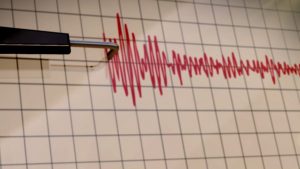Published by SANDRP
August 3, It’s a bit intriguing situation. Indian Meteorological Department and Skymet experts are downgrading the monsoon rainfall from earlier forecast 100% to 92%. Both agencies are predicting even lower rainfall in remaining part of current South West Monsoon. Bihar has received 413.2 mm rainfall till Aug 2, 2018, 22% below normal. And yet, starting Aug 1, CWC’s (Central Water Commission) flood forecasting sites along the Ganga were showing ominous portents. For the first time this monsoon, the sites started showing steep upwards trend.

Suddenly, on Aug 1, the water level of Ganga at Sahibganj went to 26.45 m, already 20 cm above warning level of 26.25 m. by noon on Aug 3, the level was up to 26.99 m, 74 cm above warning level, with CWC predicting it to reach 27.2 m by 0600 hrs on Aug 4.
Downstream, at Farakka barrage site, the most important one for Ganga floods in Bihar for over four decades now, the rising water level since last 4-5 days breached the warning level for the first time this monsoon, on Aug 2. It was at 21.68 m at noon on Aug 3, already 43 cm above warning level of 21.25 m.
CWC predicts this level to continue to steadily rise to 22 m on Aug 4.
Upstream at Kahalgaon, water level (30.11 m) breached the warning level of 30.09 m by noon on Aug 3, with rising trend expected to take it to 30.3 m by the night of Aug 3.
Further upstream at Gandhighat in Patna, Ganga water level (47.67) at noon on Aug 3 had already breached the warning level and was showing rising trend. This rising trend in unison could be seen at other sites along Ganga in Bihar, including at Munger, Hathidah, Dighaghat, Ballia (UP), Buxar, Ghazipur (UP).
Here we are taking into account the situation of flood water accumulation in Ganga river bed upstream of Ganga, only looking at the main stem of the river. There have been many more flood monitoring sites this monsoon along Ganga tributaries that have for long, not only breached the warning levels, but also the danger level for the long duration. We have only mentioned and shown CWC’s flood hydrographs for some of the sites along the Ganga main stem since Aug 1, since these sites are reaching warning levels or close to them for the first time, almost in unison.
It’s of course known that the water reaching Farakka is not only from Bihar but entire Ganga catchment upstream of Farakka, including the whole of Nepal and parts of Tibet upstream. But North India, in general, has been having below normal monsoon.
The massive silt brought by Ganga is mostly trapped upstream of Farakka, the quantum so trapped is a matter of speculation and debate as CWC has no information or credible assessment about it. That silt, accumulating since the commissioning of Farakka barrage in 1975 is making the discharge of water upstream of Farakka sluggish, and thus creating prolonged flooding on both sides of the Ganga, as also its tributaries in some cases. How far the Farakka impact is there to the upstream of the barrage in terms of such sluggish flow and prolonged flooding is again a matter of speculation since CWC does not have credible information about river behaviour pre-Farakka and even post Farakka.
Its feared that this sluggish flood discharge behaviour of Ganga may make the flood situation in Bihar along the Ganga severe and prolonged from now. How long could this last? Till the end of the monsoon? Let us keep monitoring.
South Asian Network on Dams Rivers and People (ht.sandrp@gmail.com)
Will sluggish Farakka again create prolonged floods along Ganga in Bihar?



